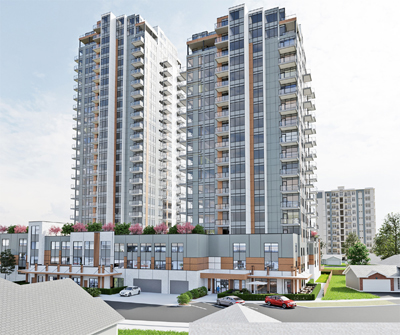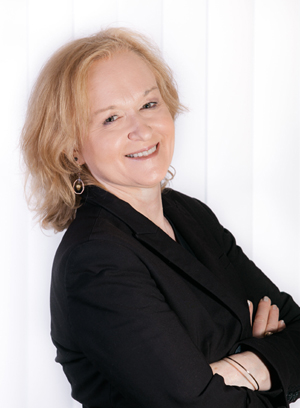Wednesday September 29, 2021 | LANGFORD, BC
Perspective by Mary P Brooke, Editor | Island Social Trends
As the City of Langford continues its robust expansion — a lot more people moving here, and a lot more infrastructure and services being developed to support the now 50,000+ population, airspace is in the eye of the developers. The taller building proposals get some public pushback during city council and committee meetings.
Due to the tremendous increases in the cost of development and construction — not just material costs but financing costs (including to meet increasingly stringent building code and lifestyle requirements) while the project is underway and the sometimes repeated attempts at honing a design to line up with public input, the cost of living units goes up.
As one way to cope with the cost pressures, the height of multi-unit buildings can go up too.
And, somewhat distinctively the Langford way, developers are leaned upon to pay for a lot of the amenities and other community-supportive projects. Developers are welcome, included, integrated, and expected to contribute as things go along.
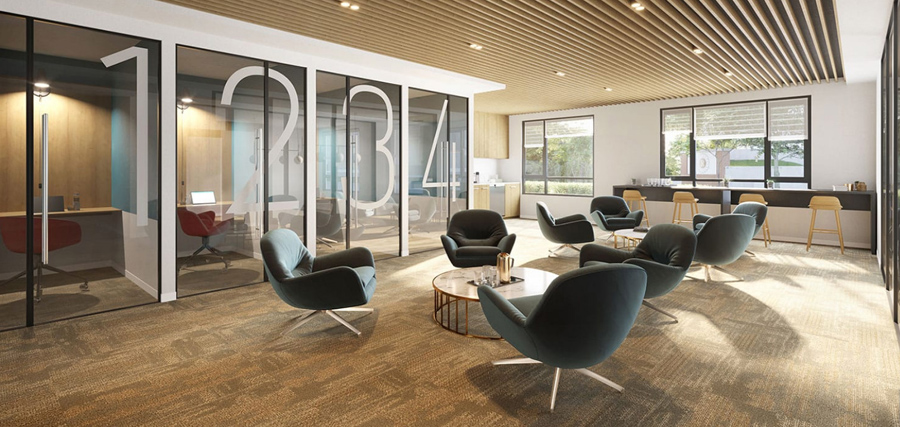
In expanding the City of Langford the way Mayor Stew Young has … with an inspired vision, distinct goals, and sticking to it, he has attracted new residents to town who look to experience and benefit by the ‘new Langford’ experience.
The city has rocketed toward being more urban than rural, in a relatively short period of time. Young was first elected as mayor over 27 years ago and has spearheaded his project in the top job ever since, including by keeping the same city councillors on board for much of the duration and manifesting an integrated construction community. He relies on the West Shore Developers Association for input on a regular basis and has brought in both architectural consultants and financial investors from several parts of Canada.
Adapting to a city lifestyle:
It should be no surprise that some longtime residents of the western community who have been accustomed to large lots, spacious homes, an easy-going pace, and short travel times for getting around town are becoming increasingly vocal about smaller lots, tighter high-density living complexities, a faster more complex pace around town, and longer times for driving within the city to services and venues.
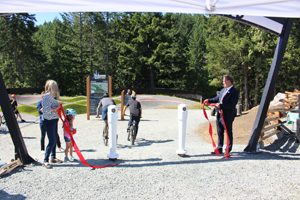
But with the growth of city ambiance, services, amenities and recreation comes the price tag to build it. Not just the dollars in expenditure, but the price of giving up some space and ease in return for the range of options that Langford now offers. More people bring more revenues to the city (i.e. taxes) and bigger-is-better when it comes to certain types of shared funding opportunities with provincial and federal levels of government.
Impact on delivering public education:
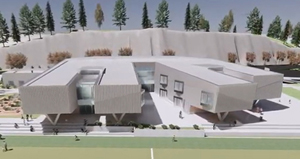
While retail and commercial ventures generally benefit from a larger population and customer based, some other loads fall, by default, on adjunct community services, such as public education.
The Sooke School District (SD62) which even last night at their board meeting mused about itself as perhaps being ‘the fastest-growing school district in the universe’, has been faced with rapidly building new schools since around 2013, when the population projections showed many years of growth coming down the line. Their schools are located in Langford, Colwood and Sooke, areas which are all experiencing determined efforts toward increasing their housing supply.
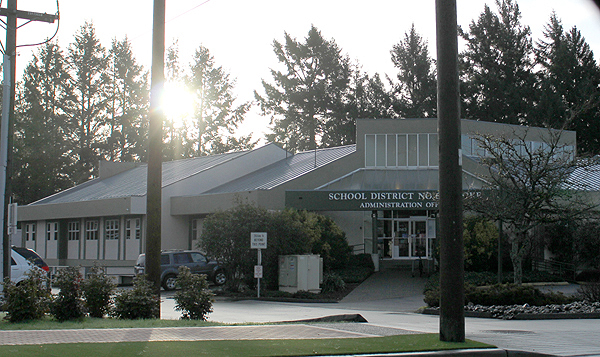
As young families seek affordable housing, they come to Langford, and the demand for classroom spaces increases. Last night SD62 announced the biggest annual school population increase yet: in 2021-2022 there are 562 more students than last year (and it could surpass 600 if they count in more ways and places).
This yields SD62 more per-pupil funding revenues from the Ministry of Education, but also the administrative challenges to, yes, build still more schools, but also hire more teachers and administrative staff, maybe even require more buses and drivers, and the supplies for teaching and cleaning that go along with managing large education facilities. This in turn produces more jobs, busier roads, more complex IT networks — it’s all connected.
Tall towers:
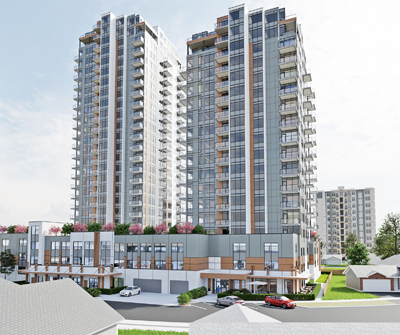
Anyhow, public complaints about tall towers in the downtown core are a pinch-point in the political momentum of Mayor Young and his long-time council. It wasn’t too long ago that 6-storey and 12-storey towers were challenged by public input.
This week even a 24-storey height was discussed for a proposed condo development in the Peatt Road area. Getting these projects wound through the political and public hoops while meeting all the building development requirements (density lifestyle issues and potentially more traffic congestion) is a long slog.
If people want what big-city-living offers in the way of commercial opportunities, convenient shopping, a range of services, not having to travel far for any of it, cross-town road routes, and in Langford’s unique case being a ‘national sports capital’ with a plethora of sport opportunities from youth to amateur to pro-level, there needs to be an acceptance of efficient and effective use of land.
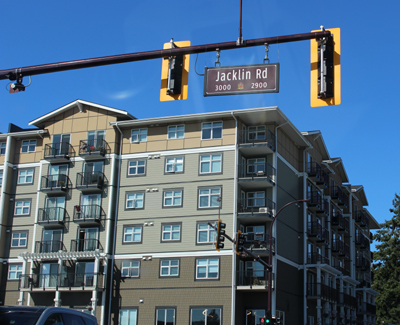
Tall condo, apartment and office towers come with their own problems, including the well-known profile of urban density challenges. Taller buildings present impacts on daily levels of sunlight, produce a need for nearby greenspace and community gardens, can lead to more traffic congestion, and can agitate social interactions in tight spaces (which can include violence and crime).
Langford’s taller buildings are popping up in the city core, along Jacklin Road, and in the Westhills central commercial area.
Housing affordability:
The making of a big city comes with big challenges. If people want Langford to be a robust and vibrant city, welcoming more people here with housing options that they can afford is a big part of the puzzle.
Affordability is entirely relative. Even just a few years ago the average single-family home sale was just busting into the $700,000 range in Langford. Now it’s well over a million (the average sale price of 52 single-family homes in Langford in August was $1,098,128).
High-density condo living also scorches into relatively high prices in Langford (in August the average condo sale price of 85 units sold was $473,500). Row/townhouses offer a bit more spaciousness and sense of one’s own space; those sell for more than condos but less than houses (in August in Langford there were 18 townhouse sales with an average sale price of $686,533).
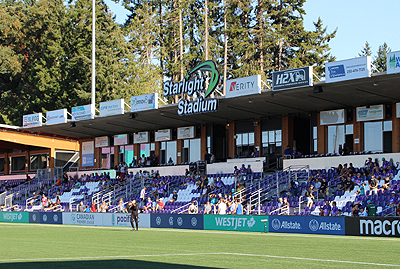
Somewhere in that mix are single-family homes that are constructed intentionally to be rented out as mortgage helpers — in whole or in part; those properties are taxed as residential but operate essentially as commercial. The Victoria Real Estate Board says the sale of those housing types are included under single-family.
Residential lots sell on average for over a million dollars in Langford ($1,141,000 on average in August).
Renters as part of the mix:
While home ownership generally in seen as a direct taxation source for any municipality, overlooking renters as a key segment of the local population economic base is inappropriate in Langford.
Many of the rental properties in town are owned as ‘mortgage helpers’ by the securely employed middle-class, who in addition to maintaining their financial stability and payment of taxes also provide, manage and maintain a range of accommodation types for a burgeoning population.
While Langford lately has indicated a return to increasing the number of condos in the local housing market (something that was quite popular in the 1990s and early 2000s), doing that at the expense of providing a good range of rental opportunities could be a weak point in the strategy. Not everyone can afford or manage to own a property, and may not wish to (as lifestyle changes can be fluid in a challenging economy). Renters appreciate and hope to enjoy their town as much as owners do.
People who first come to town for employment or lifestyle-revision are likely to be renters. If they find suitable rental accommodation (whether apartments, condos, townhouses or full houses with yards) they are likely to settle in faster and be ready to try home ownership if they can afford it.
Political rumblings:
In the past year or so, there have been various public pressures on Langford Council to do things differently, to hear public concerns more attentively and to respond in kind. Input is made at council and committee meetings, sent by email or as letters, and proliferated in various social media streams.
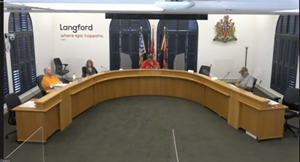
Sometimes the demands are not truly solvable (i.e. a bigger town comes with new impacts) and sometimes they are (but doing that skillfully may take time — like adding playgrounds that include real greenspace or not just plunking in lane barriers because people ask for them, knowing that visual appeal and neighbourhood flavour are lost in the process).
The next municipal election cycle will be ramping up soon, toward October 2022 elections. That includes both city councillors and school board trustees.
===== About the writer:
Island Social Trends Editor Mary P Brooke has covered news of the west shore for now 13 years — starting with MapleLine Magazine in 2008-2010, shifting to Sooke Voice News during 2011-2013, then branching out as West Shore Voice News in 2014-2020, before meeting the goal of addressing socioeconomic and political news issues of the south Vancouver Island region and provincially through Island Social Trends starting summer 2020.
Headquartered in Langford since 2017, Ms Brooke has also operated her publishing business Brookeline Publishing House Inc over the years in Fairfield, Oak Bay, and Sooke. She trains young journalists, and her company offers the Island Social Trends Scholarship in Journalism each year within SD62.


